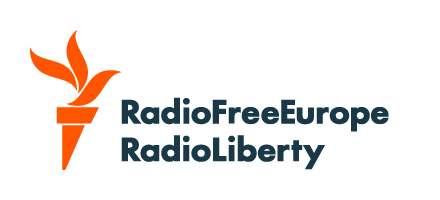A Ukrainian drone attack hit Russia's Black Sea port of Tuapse on November 2, setting an oil tanker ablaze and damaging port infrastructure, in the latest of a series of strikes on Moscow's crucial oil sector.
A source in Ukraine's Security Service (SBU) told RFE/RL's Ukrainian Service it had fired dozens of drones at the facility, which has been targeted in multiple attacks this year.
"Five drone hits were recorded. As a result of the attacks, a tanker caught fire and at least four oil tanker [loaders]...were disabled. Port buildings were also damaged," the source said.
"The security service continues to strike at Russian oil refining infrastructure, which gives the enemy resources for aggression against Ukraine," the source added.
Russian officials said that "fragments of [drones] fell on an oil tanker, damaging the deck superstructure. A fire broke out on the vessel. The crew were evacuated."
The attack came as Ukrainian military authorities insisted their forces were holding out in the front-line eastern town of Pokrovsk, and while Russian forces launched missile and drone attacks at various locations overnight from November 1-2.
Zelenskyy: New Patriots Have Arrived
The Ukrainian general staff reported on November 2 that Russia had launched Iskander-M ballistic missiles and 79 strike drones overnight.
A Russian drone strike on Odesa killed two people. Another person was injured, according to the head of the regional military administration, Oleh Kiper, who said "civilian infrastructure" was damaged.
Ukrainian authorities also reported five people were killed in Russian shelling in the eastern Donetsk region, resulting in power being cut off to tens of thousands of people.
In a social media post on November 2, Ukrainian President Volodymyr Zelenskyy said Germany had provided additional Patriot air defense systems.
He did not specify when this happened or how many systems or missiles were provided. Ukraine has been seeking to upgrade its air defense capabilities as Russia has intensified its aerial assaults in recent months.
"We have strengthened the Patriot component of our Ukrainian air defense. I thank Germany and personally Chancellor Friedrich Merz for this joint step of ours to protect lives from Russian terror," Zelenskyy wrote.
"We have been preparing this strengthening of air defense for some time, and now the agreements reached have been implemented," he added.
On the front lines, Ukrainian military authorities reported ongoing fighting at numerous locations on November 2. But much of the focus remains on Pokrovsk, where Ukrainian forces reportedly face some 170,000 Russian troops.
The Battle For Pokrovsk
Analysts warn that the fall of Pokrovsk, which had a prewar population of around 70,000, could open a route west into Dnipropetrovsk for Russian forces, putting Ukraine’s southern regions at risk.
“We are holding Pokrovsk," Ukraine’s commander-in-chief, General Oleksandr Syrskiy, wrote on Facebook on November 1.
"A comprehensive operation to destroy and dislodge enemy forces from Pokrovsk is ongoing," he added a day after Ukrainian President Volodymyr Zelenskyy called the fight for the mostly destroyed city “our priority.”
As the fighting raged, Kremlin spokesman Dmitry Peskov said a meeting between the Russian and US presidents was "not necessary at the moment."
The comments, released by the TASS news agency on November 2, were the latest indication that Moscow is determined to press ahead with its nearly 4-year-old full-scale invasion -- despite US-led peace efforts.
"What is needed right now is very meticulous work to address the specific details of the problem," Peskov said, without elaborating.
Following Western media reports, Kyiv confirmed that special forces had been deployed to Pokrovsk, as Russian forces claimed to have encircled Ukrainian defenders there.
Russia’s Defense Ministry also claimed that its forces had killed all 11 members of a Ukrainian special forces team that had landed in the city from a helicopter.
The situation on the ground remains unclear and cannot be independently verified.













